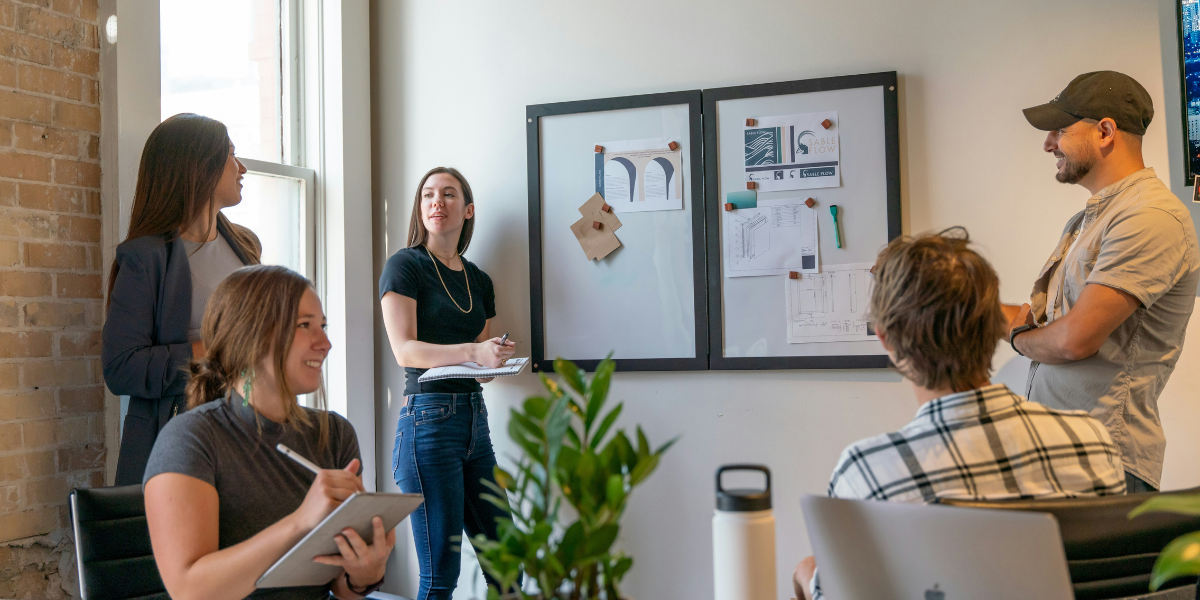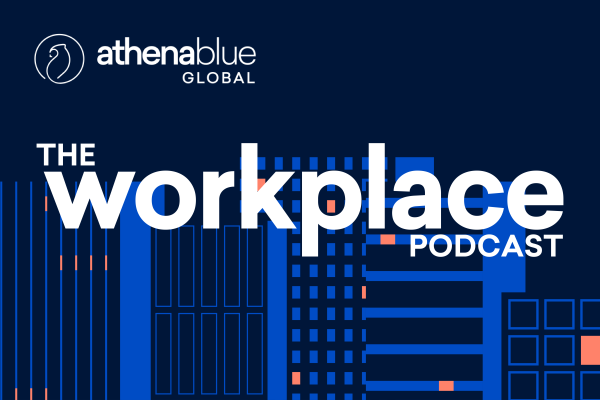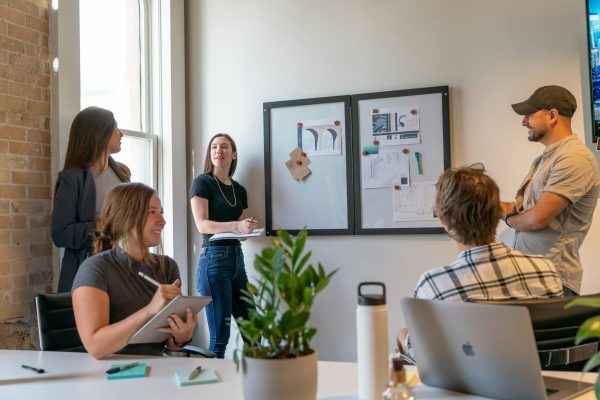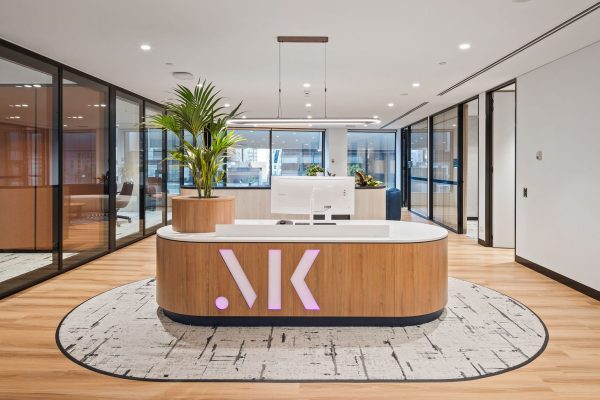Every team knows what it’s like when the ideas in the room don’t flow. When meeting participants are on different wavelengths, unable to build rapport. Or when people facing a challenging task just can’t focus.
Employees can get stuck in suboptimal emotional and mental states at work for a variety of reasons, but one common contributor is the physical environment. While organisations are putting increasing effort into creating highly functional workplaces, the look and feel of the environment is often designed less strategically.
Studies show that workplaces all around the world are rated more highly on functionality compared to how well they support employees’ emotional and mental states. This of course doesn’t mean that the style and ambience of the workplace is ignored. Many designers do a decent job of selecting furniture, materials and colours, for example, that make the space attractive and comfortable. However, less consideration is given to the psychological aspects of work.
While a large body of evidence is available on how the qualities of the physical space can support different ways of thinking and behaviours, this knowledge remains vastly underutilised. And the consequences can be costly. What can possibly go wrong when employees and visitors struggle to get into the right headspace? Innovation failures, missed deals, and productivity declines are very real risks, and the list goes on.
Here are a few examples of evidence-based workplace design solutions that can promote beneficial thinking patterns and behaviours, enhancing organisational performance.
01 – Creative idea generation
Tapping into a creative state of mind takes time and effort, and the physical space can make this transition easier (or more difficult). As a starting point, creative spaces should look and feel very different from areas dedicated to focused work – assisting people to quiet down their critical minds, leave behind the everyday pressures of their jobs, and embrace the unknown.
To help unlock imagination, it’s worth creating brainstorming spaces in parts of the office that feature high ceilings and/or offer wide open views. Expansive scenery promotes free thinking and invites people to focus on the bigger picture. Artworks can also broaden perspectives and inspire a sense of possibility, including nature scenes, abstract and surreal pieces, and art representing different cultures.
Playing and risk taking are important aspects of idea generation. It is therefore beneficial to create innovation spaces with a playful vibe, unexpected elements, and bold design solutions that deviate from the norm. The innovation process is also inherently messy, and a space with an unfinished feel and non-precious aesthetic can give people the permission to sketch out and explore unorthodox ideas.
02 – Dynamic collaboration
Designing spaces for dynamic collaboration is a fascinating challenge. These spaces should always feel safe and engaging, reassuring employees that they belong, and their ideas and viewpoints are welcome. People need to sense they can share their thoughts freely without negative consequences. Visual and acoustic screening from the rest of the office, as well as non-hierarchical furniture layouts can be beneficial.
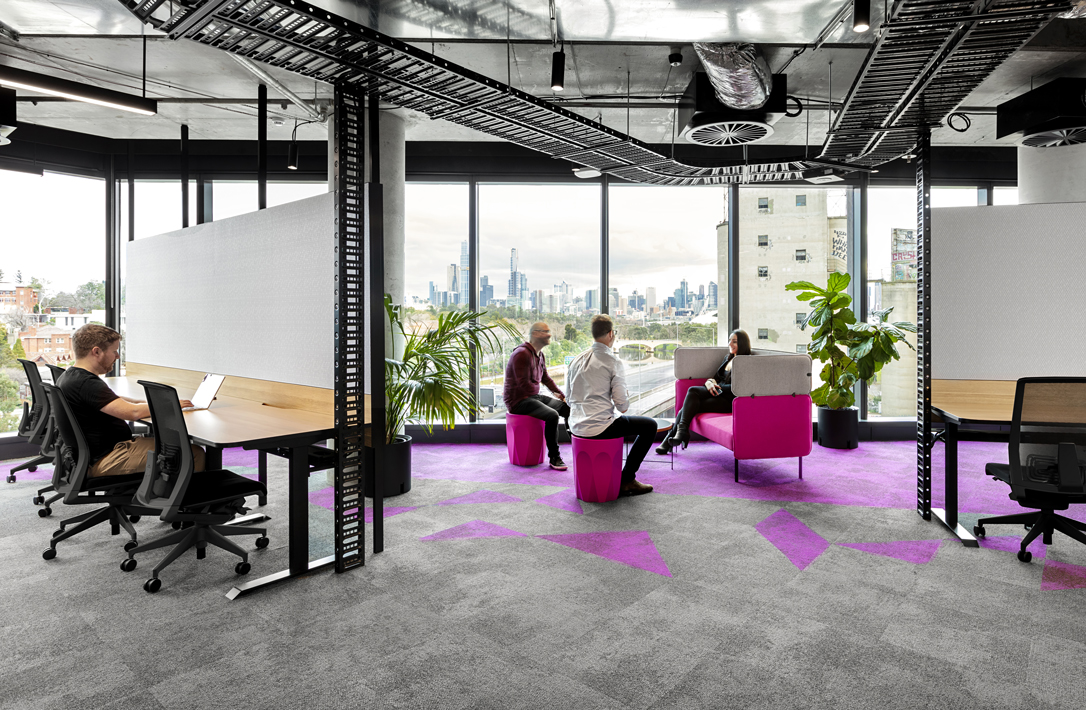
Collaboration spaces that reflect the identity of the team can boost engagement. And interestingly, as studies suggest, teams can also perform better in spaces that reflect the identity of other teams – compared to spaces without any personality. For this reason, it’s a good idea to give each collaboration space a unique style, and/or to offer opportunities for personalisation.
At the same time, these spaces shouldn’t feel too comfortable. Dynamic collaboration often benefits from physical movement – people standing up, walking around the room, and engaging with physical objects such as whiteboards or modelling materials. When people sit on soft comfortable sofas or cushions, they are less likely to stand up and get involved in the discussion. As shown by research, tall chairs or standing desks with no chairs tend to enhance participation in collaborative creative activities.
03 – Enhanced Focus
It’s a well-known fact that people tend to concentrate better when they don’t have to deal with frequent distractions. Simple, sheltered environments tend to support focused activities well. However, this doesn’t mean these spaces need to be sterile. In fact, a lack of stimulation can make people restless, emotional, and less able to concentrate.
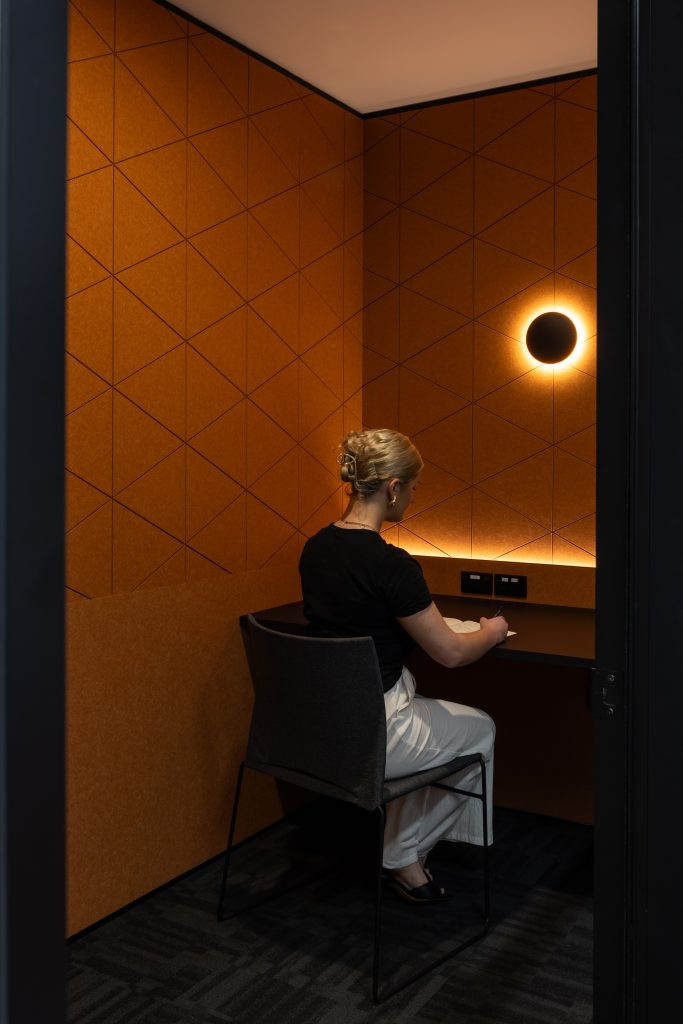
Studies show that many employees can focus better in moderately cluttered environments. An enriched, somewhat home-like space helps people feel safe and grounded, and makes it easier for them to immerse themselves in their tasks. Décor and plants in the workplace are shown to increase productivity. It is also recommended to introduce colours into focused spaces, as overwhelmingly white surfaces can contribute to eyestrain and headaches.
Focus requires channelling attention, and confined spaces with well-defined boundaries help promote this state of mind. Low ceilings or canopies, and restricted views to the outside world, can assist employees in keeping their thoughts on track. In addition, cool colours and relatively high lighting levels are optimal for tasks that require attention to detail, analytical thinking, and logical reasoning.
04 – Relationship building
Conversations can take very different directions depending on the environment. In formal settings, people are more inclined to act more formally, comply with expectations, and avoid personal or risky subjects. In casual and informal spaces, on the other hand, they find it easier to drop their guard and express themselves freely.
Informal conversations play a vital role in developing trusting relationships among employees, clients and other stakeholders. So, it’s important to create the right spaces for this purpose. A casual meeting or social space might resemble a home lounge, a café or a bar – with welcoming furnishings and stylish, tasteful décor. But it’s critical that this space doesn’t look and feel institutional.
To create a relaxed ambience, it’s also important to pay attention to the less tangible aspects of the design. Ideally, the space should have moderate background noise, and be free from echo – as silence and echo can instantly make people feel self-conscious. Dim lighting, soft finishes, as well as warm colours and temperatures, can contribute to a warm and friendly ambience. And it’s recommended to use relatively small tables that allow everyone to sit close enough to one another to build rapport and have a connected chat.
Utilising what is available
An office space that brings out the best in people doesn’t need to come at a premium price. It’s simply a matter of making carefully considered choices. So, when the question comes up, ‘How can we achieve better utilisation of our space?’, it’s also worth asking, ‘How can we better utilise available knowledge to create a high-performance workplace?’
Before jumping into interior design decisions, workplace change teams need to carefully define the overall purpose of the workplace, as well as the intended uses of the individual spaces and settings. This process involves consolidating data from the following sources:
- Industry knowledge on trends, opportunities and challenges
- Organisational knowledge on business strategy, culture and brand
- Leaders’ and employees’ knowledge on ways of working, and individual needs
Once the purpose of the specific spaces is well defined, it is time to select interior products, materials and solutions – with the support of science-based insights on place, experience and performance.
Purpose-designed workplaces are engaging and diverse environments where employees are more likely to want to work. They inspire and energise people, while promoting productive habits. They help attract and retain talent. And they support individuals and teams to contribute to the best of their abilities.
Tapping into research-based knowledge in the design and change process not only leads to more effective and cost-effective workplace solutions, but also makes the change journey more straightforward and enjoyable – while giving everyone the confidence that the new environment will achieve its objectives.
The next Insight article will unpack the process of defining the purpose of individual settings and of the workplace as a whole.
Recommended reading:
Augustin, S. (2009). Place advantage: Applied psychology for interior architecture. Wiley.
Doorley, S., & Witthoft, S. (2012). Make space: How to set the stage for creative collaboration. Wiley.
Pizag, A. (2015). Create a Thriving Workspace: 7 essential design principles for positive high-performance physical work environments.
Terrapin Bright Green. (2014). 14 Patterns of Biophilic Design: Improving Health and Well-Being in the Built Environment.

